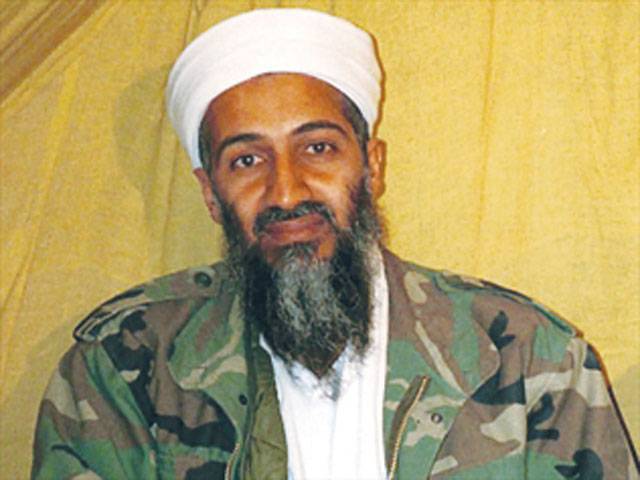WASHINGTON - The US commando raid that killed Osama bin Laden was guided from space by a fleet of satellites, which aimed dozens of receivers over Pakistan to collect a torrent of electronic and signals intelligence as the mission unfolded, an American newspaper reported Friday.
Citing a top-secret U.S. intelligence document, the newspaper said the National Security Agency also was able to penetrate guarded communications among al-Qaeda operatives by tracking calls from mobile phones identified by specific calling patterns, the document shows.
Analysts from the CIA pinpointed the geographic location of one of the phones and linked it to the compound in Abbottabad, where other evidence suggested bin Laden was hiding.
The disclosures about the hunt for the elusive founder of al-Qaeda are contained in classified documents that detail the fiscal 2013 “black budget” for U.S. intelligence agencies, including the NSA and the CIA. The Post said the documents were provided to it by former NSA contractor Edward Snowden. It makes only brief references to the bin Laden operation. But the mission is portrayed as a singular example of counterterrorism cooperation among the U.S. government’s numerous intelligence agencies.Eight hours after the raid, according to the documents, a forensic intelligence laboratory run by the Defense Intelligence Agency in Afghanistan had analyzed DNA from bin Laden’s corpse and “provided a conclusive match” confirming his identity.
The budget further reveals that satellites operated by the National Reconnaissance Office performed more than 387 “collects” of high-resolution and infrared images of the Abbottabad compound in the month before the raid - intelligence that was “critical to prepare for the mission and contributed to the decision to approve execution.”
Also playing a role in the search for bin Laden was an arm of the NSA known as the Tailored Access Operations group. Among other functions, the group specializes in surreptitiously installing spyware and tracking devices on targeted computers and mobile-phone networks.
Although the budget does not provide detail, it reports that Tailored Access Operations “implants” enabled the NSA to collect intelligence from mobile phones that were used by al-Qaeda operatives and other “persons of interest” in the hunt for bin Laden. Separately, the dispatch said, Tailored Access Operations capabilities were used in April 2011, the month before bin Laden was killed, when U.S. forces in Afghanistan relied on signals intelligence from implants to capture 40 low- and mid-level Taliban fighters and other insurgents in that country, according to the documents.
The new details about the raid fill out an already rich public account of how the U.S. government employed virtually every tool in its enormous surveillance apparatus to locate bin Laden. For more than a decade, bin Laden had stymied all efforts to find him by making certain he did not leave a direct electronic trail. He steadfastly avoided phones and e-mail, relying on face-to-face communications with a few couriers and middlemen.
In addition to the satellites, the government flew an advanced stealth drone, the RQ-170, over Pakistan to eavesdrop on electronic transmissions. The CIA also recruited a Pakistani doctor and other public health workers to try to obtain blood samples from people living in the Abbottabad compound as part of a vaccination program to determine whether the residents might be related to bin Laden, according to the Post.
That doctor was convicted by a Pakistani court in May 2012 of “conspiring against the state.” A senior judicial official on Thursday overturned the 33-year prison sentence for Shakeel Afridi on technical grounds and ordered a retrial.
For all their technological prowess, US spy agencies were unable to identify bin Laden with confidence inside the Abbottabad compound, the dispatch said. By the time President Bsarack Obama ordered a team of Navy SEALs to storm the site in May 2011, US intelligence officials told the president that, according to their best guesses, the odds that bin Laden was present were 40 percent to 60percent. Even after bin Laden’s death, the U.S. government kept up its relentless high-tech campaign to unlock his secrets, it said.
Budget documents show that intelligence agencies scraped together $2.5 million in emergency money in September 2011 to sift through a backlog of computer files and other evidence recovered from bin Laden’s hideout.
The money went to buy 36 computer workstations and pay overtime to forensic examiners, linguists and “triage personnel” involved in the project.
Friday, April 19, 2024
Satellites helped US hunt OBL

Rashakai pSEZ to get Rs470.78m solar panels project
April 19, 2024
Decision to boost FED on cigarettes yields positive results
April 19, 2024
World poultry expo to be held at Gul Mukai Palace
April 19, 2024
KP govt decides to develop gemstone sector to boost exports
April 19, 2024
Hepatitis Challenge
April 18, 2024
IMF Predictions
April 18, 2024
Wheat War
April 18, 2024
Rail Revival
April 17, 2024
Addressing Climate Change
April 17, 2024
Justice denied
April 18, 2024
AI dilemmas unveiled
April 18, 2024
Tax tangle
April 18, 2024
Workforce inequality
April 17, 2024
New partnerships
April 17, 2024
ePaper - Nawaiwaqt
Advertisement
Nawaiwaqt Group | Copyright © 2024





